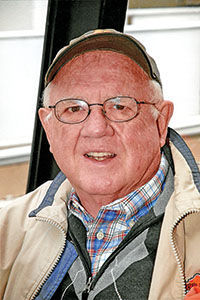With 1,754 farrier industry people in Lexington, Ky., in early March for the 28th annual American Farrier’s Association convention, it was definitely the place to be to pick up the latest shoeing ideas, see the latest products and talk shop with other horseshoers from around the country and 26 foreign countries.
Hosted by the Bluegrass Horseshoer’s Association, this year’s record-breaking attendance included 294 representatives from farrier supply firms. The number of trade show exhibits was also the largest on record.
Be Consistent
Gene Armstrong told convention attendees to always strive to only work with sharp farrier tools. This normally means taking a few moments each day to make sure your tools are sharp.
“Get used to working with sharp tools and it will result in more consistency in your daily shoeing work,” says the Atascadero, Calif., farrier.
In a session relating the AFA certification program to everyday shoeing, Armstrong urged farriers to be more consistent when making shoes. “Try to get a rhythm going and follow it each day,” he says.
When selecting a proper forging hammer, Roy Bloom maintains you can learn something by taking a close look at the anvil. “If there are chunks missing from an anvil, then that person is using a hammer that is probably too hard,” says the Drummond, Wis., farrier and toolmaker.
Work Together
Dealing with laminitis is the number one reason farriers need to work effectively with equine veterinarians, says Dr. Mike Bowman.
The equine veterinarian from Simpsonville, Ky., finds it is critical to have a good set of X-rays when deciding on the most effective treatment for lame horses.
“We like to see laminitic horses within 12 hours of going lame,” he says. “We like to get drugs into their system as soon as possible, as it has been my experience that medical therapy is very effective in the early stages of acute laminitis.”
Bowman recommends corrective trimming and shoeing within 48 hours due to the strain of pathologic changes due and the likelihood of complete rotation occurring.
“This is a very dangerous time for the horse and I like to get a Lily pad on the horse as soon as possible,” he adds.
When it comes to shoeing, his personal preference is to start with a heart bar shoe to provide badly needed support.
He recommends farriers try to work with equine veterinarians who have a detailed protocol that’s always followed when evaluating and treating lame horses.
“It’s a real benefit if you always start the same way with lame horses,” he says. “But the farrier and vet have to be willing to change if the program is not working.”
Most Affected Joint
French farriery researcher Jean-Marie Denoix told attendees the distal interphalangeal joint (DIPJ) is the most affected joint in the horse. It is also the joint most influenced by hoof placement and orientation and the joint that is most directly manipulated by hoof trimming and shoeing.
The researcher from Maisons-Alfort, France, says the anatomical structures of the DIPJ are highly stressed during weight bearing. This is particularly true during the stance phase that takes place on uneven ground or with symmetric foot placement.
“An adequate trimming and shoeing program requires a precise diagnosis of the injured structures, mainly based on radiography and ultrasonography,” says Denoix.
GREAT SKILLS, GREAT LEARNING. The American Farrier’s Association annual convention offered many learning opportunities for attending farriers. Besides highly educational sessions, the shoeing competition was a great experience.







